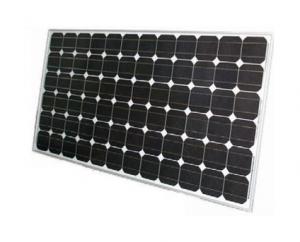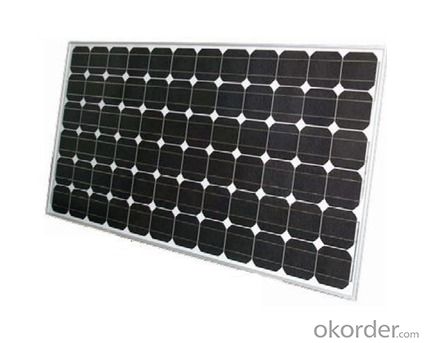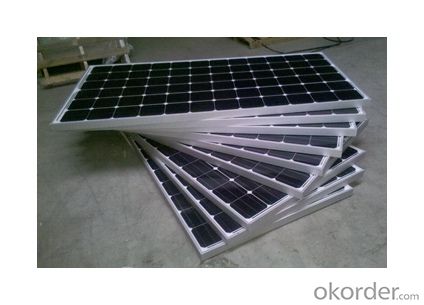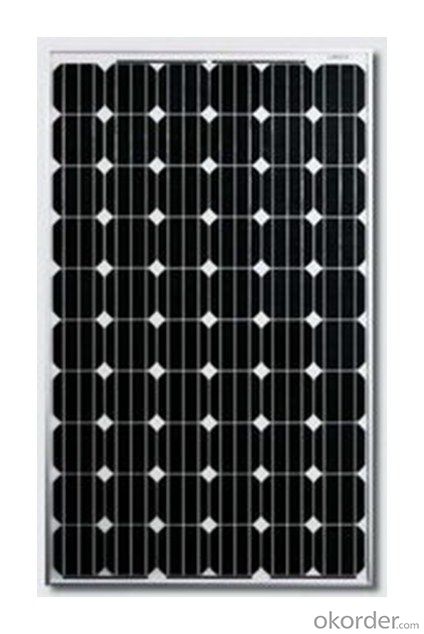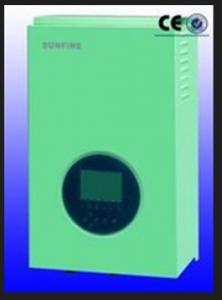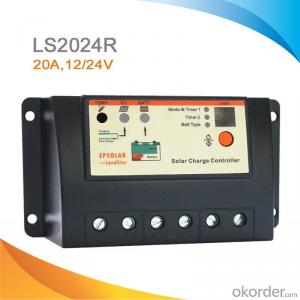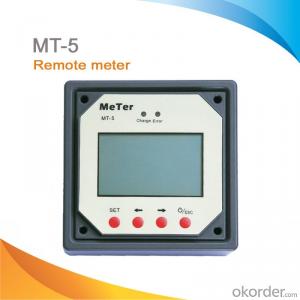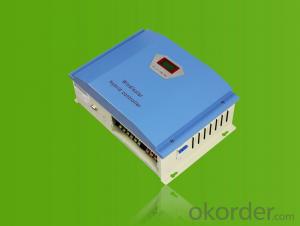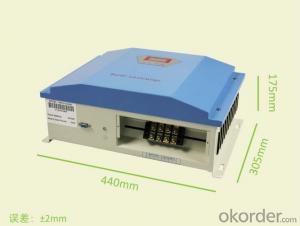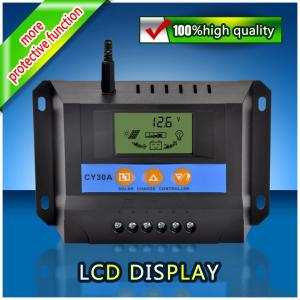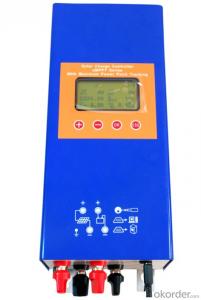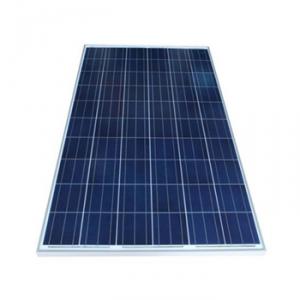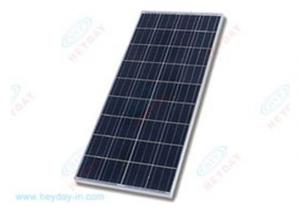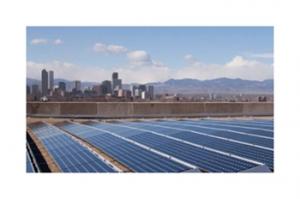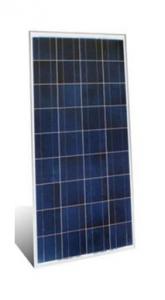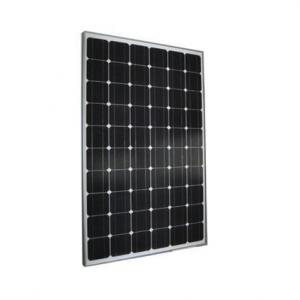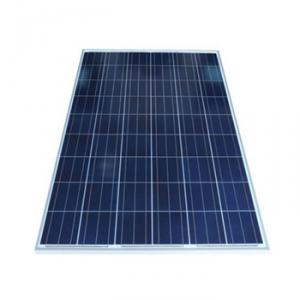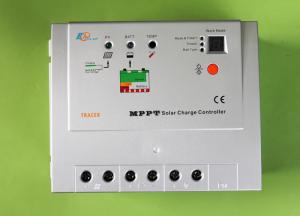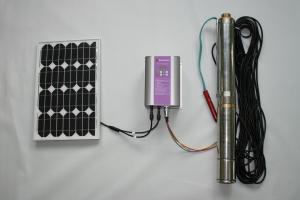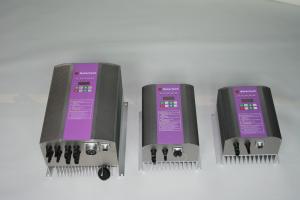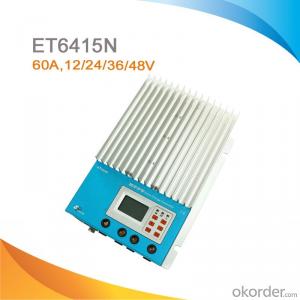Resol Solar Thermal Controllers Compatible Solar Panel Mono-Crystalline 156*156 250W Module
OKorder Service Pledge
OKorder Financial Service
You Might Also Like
Solar Module Descriptions:
This high efficiency waterproof 250W mono-crystalline solar panel is ideal for all on-grid roof installations on houses and commercial buildings, as it has been manufactured to the highest standards and certified by MCS and TUV to be suitable for any on-grid solar installations. The solar panel is also perfect for all off-grid installations on caravans, campervans, motor homes and boats for charging leisure battery banks or for off-grid household solar systems with batteries.
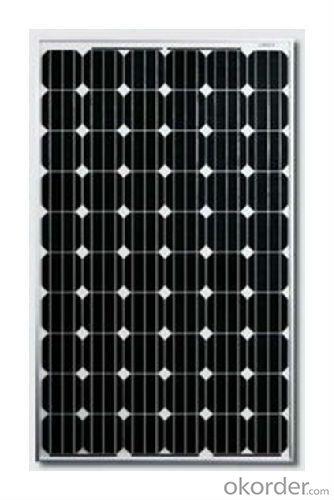
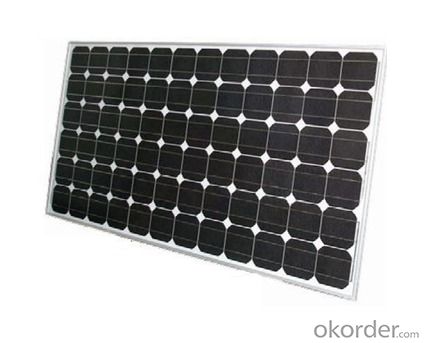
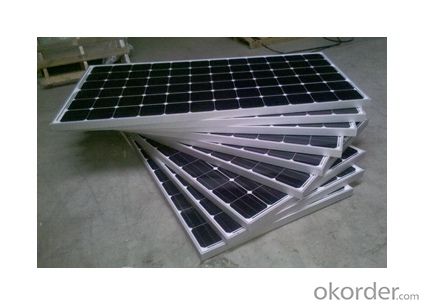
Electrical Characteristics
Max-pow (W) | 250 |
Max-Power Voltage (V) | 51 |
Max-Power Current (A) | 4.9 |
Open-Circuit Voltage (V) | 61.7 |
Short-Circuit Current (A) | 5.4 |
Mechanical Characteristics
Cable type, Diameter and Length | 4mm2, TUV certified, 1000mm |
Type of Connector | Compatible with MC4 plug |
Arrangement of cells | 6*12 |
Cell Size | 156*156 |
Dimension | 1580*1069*45 |
Weight | 20.5Kg |
Glass, Type and Thickness | High Transmission, Low Iron, Tempered Glass 3.2mm |
Features
Guaranteed positive tolerance 0/+5w ensures power output reliability
Strong aluminum frames module can bear snow loads up to 5400Pa and wind loads up to 2400Pa.
Excellent performance under low light environments (mornings evenings and cloudy days)
12 years for product defects in materials and workmanship and 25 years for 80% of warranted minimum power.
Certifications and standards: IEC 61215.
Manufactured according to International Quality and Environment Management System (ISO9001, ISO14100).
FAQ
Q: Do you have any MOQ limit?
Our MOQ is 200 pieces.
Q: How long is the warranty period for the solar modules?
15 years 90% of its nominal power rating.
25 years 80% of its nominal power rating
Q: What kind of loads can I run on PV?
With a correctly designed PV system you can power almost any electrical load.
- Q: Can a solar controller be used with a solar-powered parking lot or garage?
- Yes, a solar controller can definitely be used with a solar-powered parking lot or garage. A solar controller is responsible for regulating the flow of electricity from the solar panels to the battery or load. In the case of a solar-powered parking lot or garage, the solar controller would be necessary to manage and optimize the charging and discharging of the battery, ensuring efficient use of solar energy.
- Q: What are the signs of a faulty solar controller?
- There are several signs that can indicate a faulty solar controller. Here are a few common ones: 1. Battery Overcharging: If you notice that your batteries are constantly being overcharged, it could be a sign that your solar controller is not functioning properly. Overcharging can cause damage to the batteries and reduce their lifespan. 2. Battery Undercharging: On the other hand, if your batteries are not being fully charged or are consistently undercharged, it may indicate a faulty solar controller. This can lead to a decrease in battery capacity and overall system performance. 3. Inconsistent Power Output: If you notice that your solar panels are not consistently producing power or are not providing the expected output, it could be a sign of a faulty solar controller. The controller regulates the flow of power from the panels to the batteries, and any malfunction can disrupt this process. 4. Erratic Display or Error Messages: If the display on your solar controller is behaving erratically or showing error messages, it could indicate a problem with the controller. These error messages may include warnings about overvoltage, undervoltage, or other issues. 5. Excessive Heating: A faulty solar controller may generate excessive heat, which can be felt when touching the controller. This can be a sign of internal component failure or poor thermal management, both of which can affect the controller's performance. 6. Intermittent or Non-Functioning Load Control: If the solar controller is responsible for controlling loads connected to the system, such as lights or appliances, and you notice that these loads are not working consistently or not at all, it may be due to a faulty controller. It is important to note that these signs can also be caused by other issues in the solar system, so it is recommended to consult with a professional or contact the manufacturer for further troubleshooting and assistance.
- Q: Can a solar controller be used with a solar-powered desalination system?
- Yes, a solar controller can be used with a solar-powered desalination system. A solar controller is responsible for regulating and optimizing the charging process of solar panels, ensuring that the energy generated is efficiently utilized. In a solar-powered desalination system, the solar controller can be used to manage the input of solar energy, ensuring that the system operates at its optimal capacity and maximizing the production of fresh water from the seawater source.
- Q: Solar controller 10a, a represents what
- 10A indicates that it can control the maximum current is 10 amps, the use of the load can not be greater than this current.
- Q: Can a solar controller be used with a solar-powered billboard or signage?
- Yes, a solar controller can be used with a solar-powered billboard or signage. A solar controller is used to regulate and optimize the charging and discharging of batteries in a solar power system. In the case of a solar-powered billboard or signage, the solar controller helps to manage the flow of electricity from the solar panels to the batteries, ensuring efficient and reliable power supply for the signage.
- Q: What is the purpose of the battery temperature sensor on a solar controller?
- The battery temperature sensor on a solar controller has the important task of monitoring and regulating the temperature of the battery linked to the solar system, which is crucial for maintaining the battery's efficiency and lifespan. To accomplish this, the battery temperature sensor measures the battery's temperature and transmits this information to the solar controller. The controller then utilizes this data to make adjustments to the battery's charging and discharging parameters, ensuring that it performs optimally and remains protected. Temperature has a significant impact on the chemical reactions that take place inside the battery, and extreme temperatures can greatly affect its overall capacity and lifespan. If the battery becomes too hot, it may experience accelerated degradation or even thermal runaway, resulting in permanent damage. Conversely, if the battery becomes too cold, its internal resistance increases, diminishing its ability to efficiently deliver power. By continuously monitoring the battery's temperature, the solar controller can modify the charging voltage and current to prevent overcharging or over-discharging, both of which can be damaging. It can also adjust the charging algorithm to optimize the charging process based on the temperature conditions, ensuring that the battery operates within a safe temperature range. In addition to safeguarding the battery, the temperature sensor also enhances the overall efficiency of the solar system. By adjusting the charging parameters according to the temperature, the solar controller can maximize the charging efficiency, ensuring that the battery is charged effectively without wasting excess energy or subjecting the battery to unnecessary stress. In conclusion, the battery temperature sensor on a solar controller serves a critical purpose by monitoring and regulating the battery's temperature, safeguarding its longevity, and optimizing the performance and efficiency of the solar system.
- Q: Can a solar controller be used with a solar-powered outdoor entertainment system?
- Yes, a solar controller can be used with a solar-powered outdoor entertainment system. A solar controller helps regulate the charging and discharging of the batteries connected to the solar panels, ensuring efficient and optimal power management. This is essential for maintaining a stable power supply to the outdoor entertainment system, allowing it to operate effectively even in varying sunlight conditions.
- Q: Can a solar controller be used with solar panels that are not facing directly towards the sun?
- Yes, a solar controller can still be used with solar panels that are not facing directly towards the sun. The purpose of a solar controller is to regulate and optimize the charging process of the batteries connected to the solar panels. While direct sunlight is ideal for maximum energy production, solar panels can still generate electricity even when not facing directly towards the sun. The solar controller will ensure that the energy harvested from the panels is efficiently stored in the batteries, regardless of the panel's angle towards the sun.
- Q: How does a solar controller handle high voltage spikes or surges?
- A solar controller is designed to handle high voltage spikes or surges in a few different ways. Firstly, most solar controllers have built-in overvoltage protection, which means they can withstand higher voltages than what they are rated for without getting damaged. This feature helps to protect the controller from voltage spikes that may occur during thunderstorms or other electrical disturbances. Additionally, solar controllers often employ surge protection devices such as varistors or transient voltage suppressors. These devices are designed to divert excess voltage away from the controller, ensuring that it does not get overwhelmed by the sudden surge. Furthermore, some solar controllers also have voltage clamping circuits that limit the voltage to a safe level. These circuits act as a safety net by preventing the voltage from exceeding a certain threshold, even if a spike or surge occurs. Overall, the combination of overvoltage protection, surge protection devices, and voltage clamping circuits allows a solar controller to effectively handle high voltage spikes or surges. By absorbing, diverting, or limiting the excess voltage, the solar controller ensures the safety and longevity of the system it is connected to.
- Q: Solar controller can not charge what is the reason the electric power will be less than the inverter with no fixed freezer! Solar energy simply did not charge into the electricity
- Are charged control point voltage: direct charge after the end of the battery will be charged and discharged controller for some time, so that the voltage naturally fall, when the fall to the "recovery voltage" value, will enter the charge state. Why are they designed? That is, when the direct charge is completed, there may be individual batteries "backward" (terminal voltage is relatively low), in order to pull these individual molecules back, so that all the battery side voltage is uniform, so it is necessary to high voltage with moderate Of the current and then charge a small meeting, we can see the so-called charge, that is, "balanced charge." Are charged time should not be too long, usually for a few minutes to ten minutes, the time set too long but harmful. For a small system equipped with two batteries, it is not meaningful. Therefore, the street lamp controller is generally not full charge, only two stages
Send your message to us
Resol Solar Thermal Controllers Compatible Solar Panel Mono-Crystalline 156*156 250W Module
OKorder Service Pledge
OKorder Financial Service
Similar products
Hot products
Hot Searches
Related keywords
